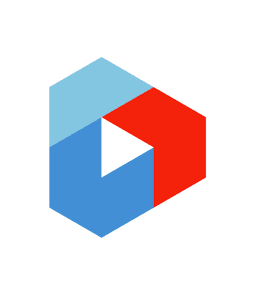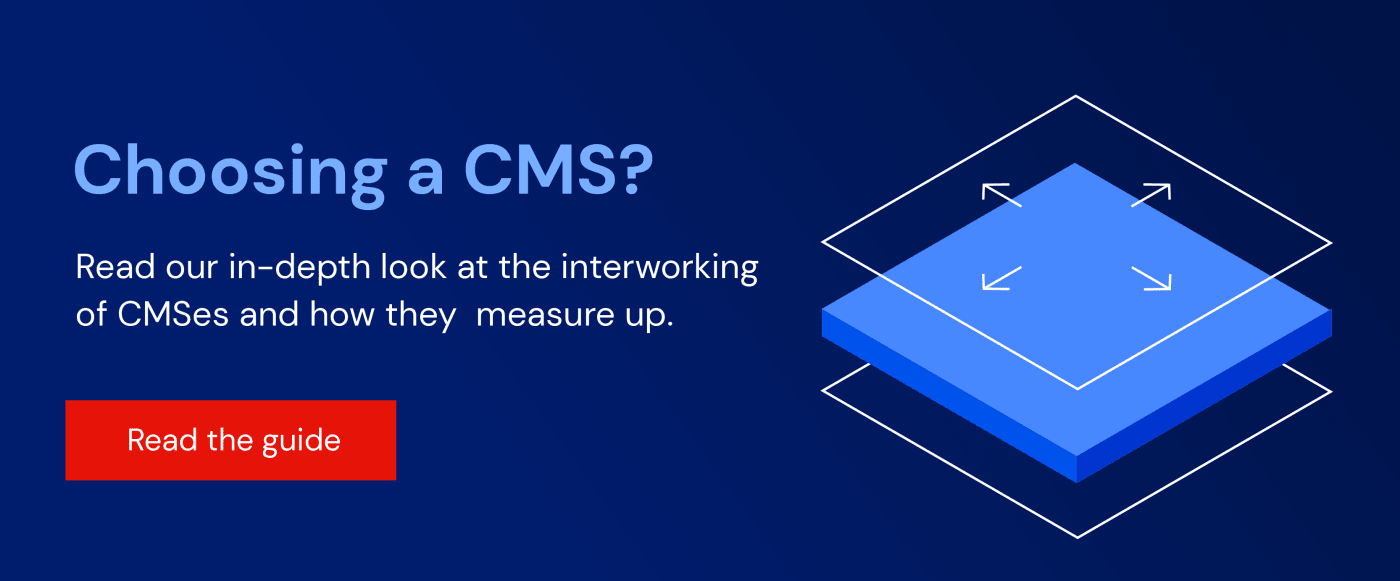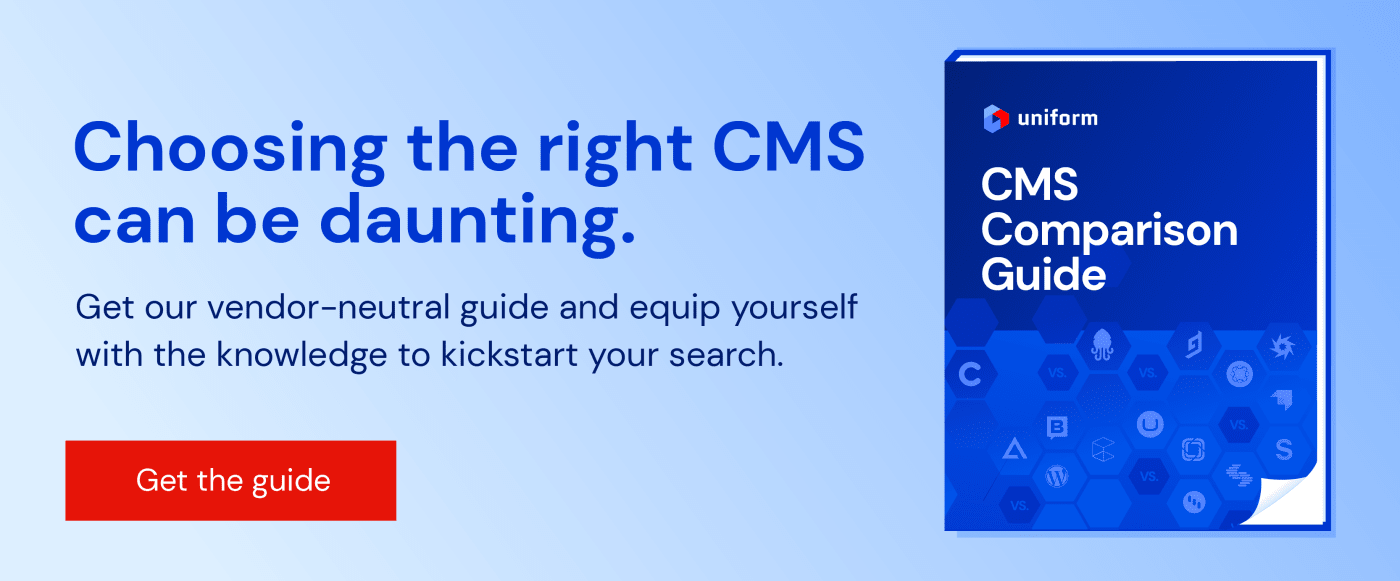Uniform blog/Vendor-neutral guidelines for choosing the right CMS
Vendor-neutral guidelines for choosing the right CMS
Vendor-neutral guidelines for choosing the right CMS
Since the birth of content management systems (CMSes) decades ago, companies have been grappling with the challenge of deciding which CMS is right for them. Complicating the picture is that competing vendors offer numerous options, and the plethora of choices makes it hard to identify the one that best fulfills your team’s needs and business goals.
The Ultimate CMS Comparison Guide from Uniform compares the top CMSes and decodes why headless is emerging as a choice for omnichannel delivery. Following are insights into that evolving space, recommendations to help ease your decision-making process, and an explanation of the vital role that Uniform Digital Experience Composition Platform (DXCP) plays in content management.
CMSes: monolithic versus headless
CMSes are software platforms on which to create, edit, store, and publish content. Traditionally, they are standalone, all-in-one suites or digital experience platforms (DXPs) that boast numerous functions—content versioning, access management, search-engine optimization (SEO)—for digital experiences.
Although monolithic applications are a straightforward way to capitalize on robust functionality through a single vendor, their upgrades are slow and time consuming, requiring extensive configurations by developers. Since speed and responsiveness are key to competitiveness, monolithic falls short of the agile and sustainable architectures for building the experiences consumers demand.
The reasons why headless is ideal for the modern stack
As tablets, smartwatches, and the like become ubiquitous, so has the adoption of headless technologies for omnichannel content. Notably, headless CMSes being channel agnostic makes it possible to deliver content across the web, mobile, and other platforms for a seamless, cohesive experience. Abundant are other advantages, including these key ones:
- Facilitation of fast and secure omnichannel delivery. Because the content (body) is separate from the presentation (head), you can build and deliver dynamic experiences at speed and scale.
- Front-end flexibility for developers. The difference is stark when compared to legacy, monolithic systems that rely on a single programming language.
- Enhanced security. Headless encompasses features with which to restrict sensitive data to authorized users only.
Understandably, despite all those obvious benefits, you might still hesitate to migrate from your traditional CMS to headless. Consider trying out and evaluating the free versions or trial runs from most headless vendors. In particular, Uniform DXCP can complement your CMS search by enhancing headless capabilities and supplying integration frameworks or content-delivery networks on top of basic platforms.
A comparison of CMS vendors
Whether monolithic or composable, no perfect CMS exists that addresses every possible scenario. To avoid making a hasty decision that can cause headaches down the road, pick a system that wins the nod of your internal stakeholders and that meets your business and technical requirements.
When setting your long term CMS vision, be sure to assess key factors such as your future content needs, current in-house technologies, and the roadblocks against reaching your goals. Also keep in mind the following when comparing CMSes:
- Integration capabilities with your stack’s other technologies—digital asset management (DAM), product information management (PIM), etc.—as well as tools and vendors in the tech ecosystem.
- Core features: the delivery model (SaaS versus on-premise), content modeling and workflow features, multilingual support.
- Costs for licensing, ownership, implementation, and professional services.
- User training and other support resources.
- The user experience and ease of collaboration between business and technical teams in creating and delivering omnichannel content.
- The suitability for your larger stack and benchmarks against your long-term goals.
Some vendors of headless CMSes offer DXP-like features; others cater to specific front-end frameworks or marketing tools like e-commerce. On the other hand, giant enterprises might opt for CMSes tailored for large-scale functions and architecture rather than less costly solutions that suit budget-conscious organizations.
Uniform DXCP: a shoo-in with headless and traditional CMSes
Uniform DXCP is ideal for building websites and digital experiences with data from your CMS, DAM, PIM, and other systems. Instead of those systems competing to be the center of your architecture, Uniform DXCP offers a composable approach, integrating with smaller vendors to manage underlying content and enabling you to swap in and experiment with CMSes to pinpoint the one that best meets your needs.
For details on how today’s leading CMSes stack up against one another and how you can partner with Uniform while evaluating CMSes, download and read The Ultimate CMS Comparison Guide.







.png&w=1080&q=90)
.png&w=1080&q=90)
.png&w=1080&q=90)